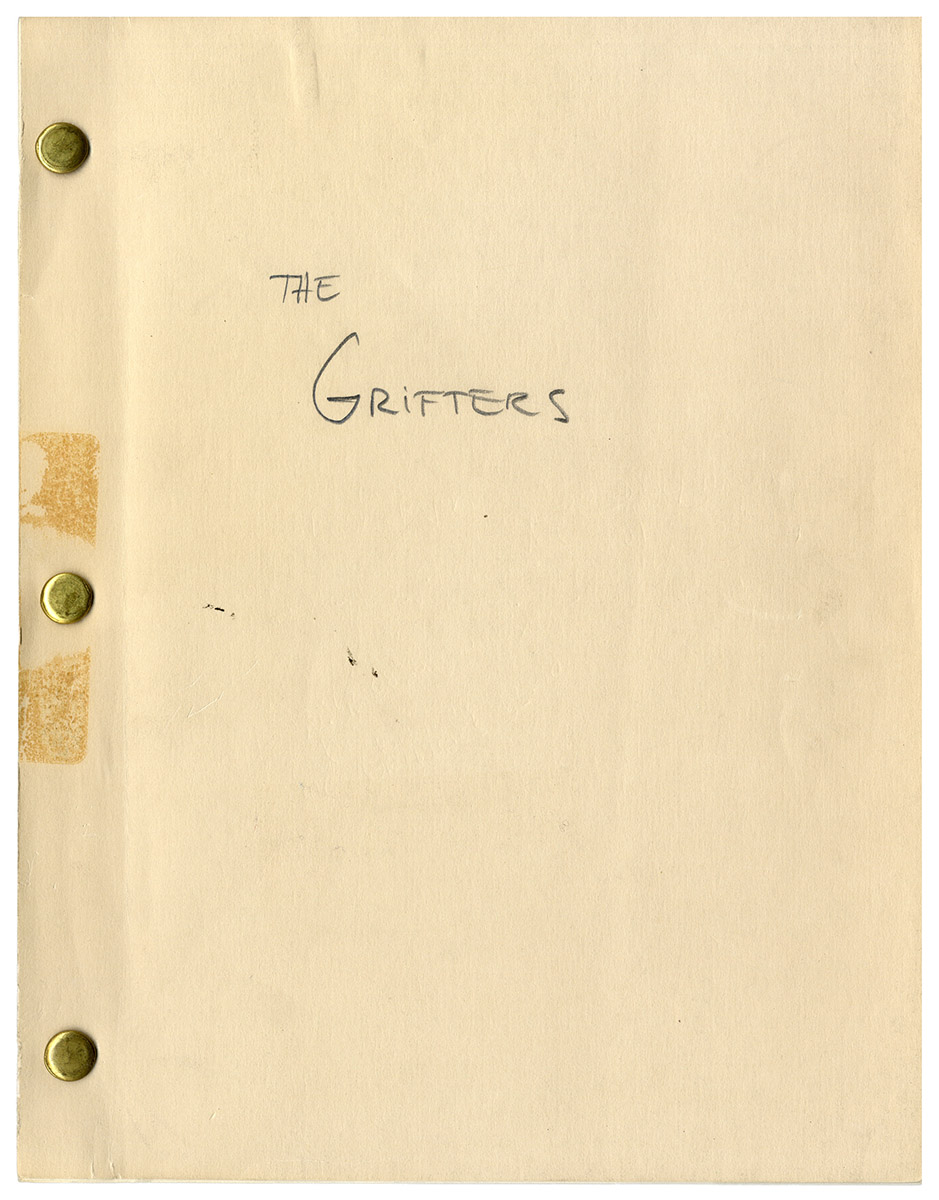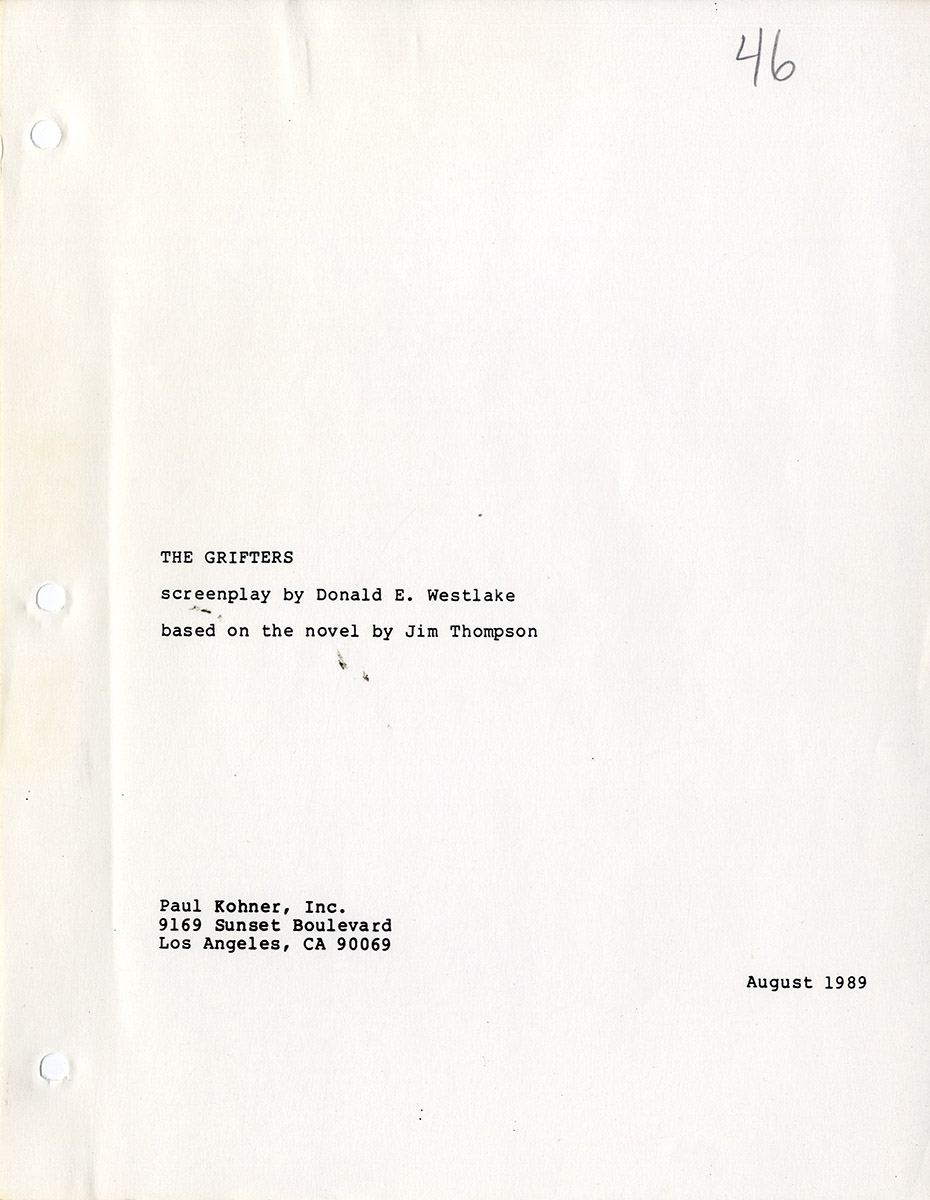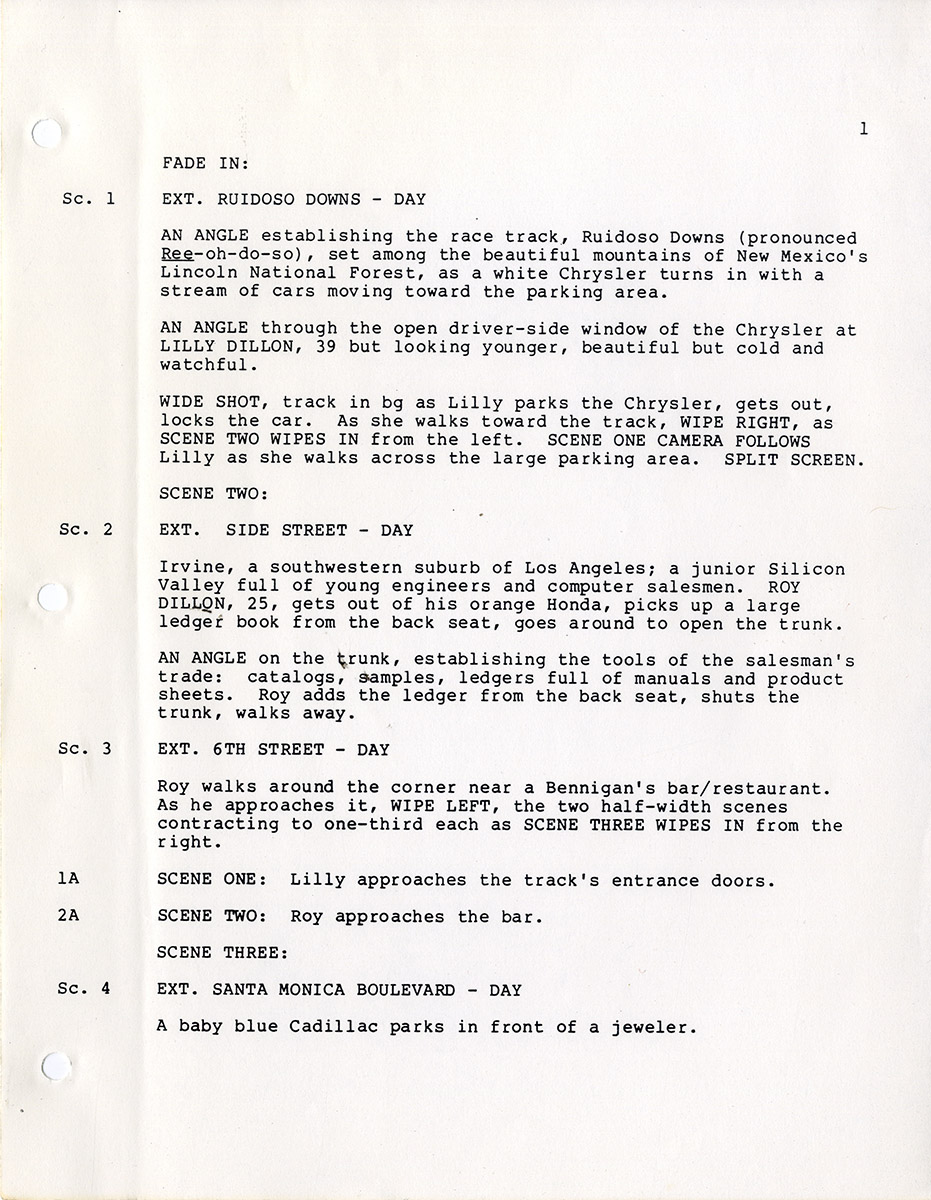Jim Thompson (source), Donald Westlake (screenwriter) THE GRIFTERS (1989) Film script
Los Angeles: Paul Kohner, 1989. Vintage original film script, 11 x 8 1/2″ (28 x 22 cm.), plain wrappers, with title in holograph pencil on front wrapper, brad bound, 120 pp. Light tape stains on outer wrappers, overall near fine.
One of the most remarkable neo-noirs of the 1990s, and surely the best adaptation of a Jim Thompson novel filmed to date, The Grifters (1990) boasts an astonishing array of talent in front of the camera and behind it. It was produced by Martin Scorsese around the same time he was directing Goodfellas, one of his most critically and popularly acclaimed hits. Scorsese hired British filmmaker Stephen Frears, known for My Beautiful Laundrette and Dangerous Liaisons, to direct the project. The three leading characters, all of them con artists, were portrayed by John Cusack, Angelica Huston and — in a breakout performance — Annette Bening. Frears, Huston and Bening each received Academy Award nominations, among numerous other accolades. Veteran film composer Elmer Bernstein provided the score. The movie itself won the Independent Spirit Award for Best Film.
Jim Thompson (1906-1977), the author of the novel on which The Grifters was based, was, along with Cornell Woolrich and David Goodis, one of the finest and darkest — some say most nihilistic — writers in the genre we now call noir. Although a number of his books, including The Getaway and The Killer Inside Me, were made into movies, their endings and other harrowing elements were frequently softened when adapted to the screen. Not so in the case of The Grifters. The screenplay of The Grifters was written by Donald E. Westlake (1933-2008), a significant crime novelist in his own right who, writing under the pseudonym Richard Stark, among others, authored more than a hundred novels and non-fiction books, including the novels on which the classic neo- noirs Point Blank and The Outfit were based.
Although Thompson himself was an accomplished screenwriter (The Killing, Paths of Glory), he was regrettably not alive to adapt The Grifters to the screen. Under the circumstances, Westlake was an ideal substitute. As Quentin Tarantino notes in an essay he wrote concerning Westlake/Stark’s The Outfit — a comment that is equally pertinent to Thompson’s work — “Complex characters aren’t necessarily sympathetic. Interesting people aren’t always likeable” [italics in original].
Though on its most obvious level Thompson’s story is about professional “grifters” (con artists) and the various ways in which they operate, the essential subtext of The Grifters is a repressed (unconsummated) incestuous relationship between a mother, Lilly Dillon (Angelica Huston), and her son, Roy (John Cusack). Complicating matters is Roy’s sexual relationship with another con artist, Myra Langtry (Annette Bening), an attractive woman slightly older than he, who is in many ways a doppelgänger of his mom. Even the names Thompson gives these characters, Lilly Dillon and Moira Langtry (Myra in the movie) — splitting in two the name of 19th century actress/celebrity Lilly Langtry, suggest the two women are mirror images of one another. And it’s not surprising they hate each other’s guts. Enough to commit murder.
Westlake’s screenplay is quite faithful to Thompson’s novel, effectively incorporating as much of Thompson’s blackly comic dialogue as possible. A memorable episode from the book involving “punchboards” is omitted from the screenplay since it would have been anachronistic for a film taking place in 1990. On the other hand, Westlake updates Thompson’s narrative with computer screens which were not in common use in 1963 when the novel was written.
Nor is there much difference between Westlake’s August 1989 screenplay and director Frears’ completed film. Aside from a few trimmed lines, the biggest difference is the omission of a couple of sequences from the screenplay: first, a pair of scenes in the office where Roy has a legitimate job as a salesman — a cover for his grifting — and more significantly, an extended flashback showing his tense life growing up with a mother who was hardly more than a child herself, age 14, when she gave birth to him.
The Grifters makes effective use of Southern California locations, notably a racetrack where Lilly does her work placing bets for a mob boss, and a train from L.A. to San Diego where Roy cons a group of sailors with a crooked dice game. The screenplay and film end with a tragic confrontation between Roy and his mother Lilly, an argument over money from which only Lilly emerges alive. The last shot in Westlake’s screenplay is of Lilly leaving Roy’s flat. But director Frears adds an interesting coda: two shots of Lilly going down in an old-fashioned elevator, metaphorically descending into Hell, followed by a long overhead shot of Lilly in her car driving into the noir Los Angeles night. Grant, p. 274 / Silver, p. 391. Spicer, p. 420.
Out of stock
Related products
-
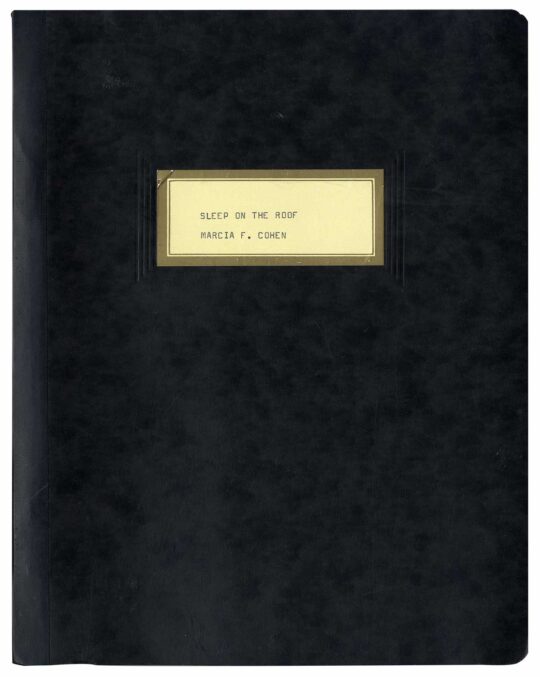
SLEEP ON THE ROOF (1967) Unproduced script based on the life of Margaret Sanger
$500.00 Add to cart -
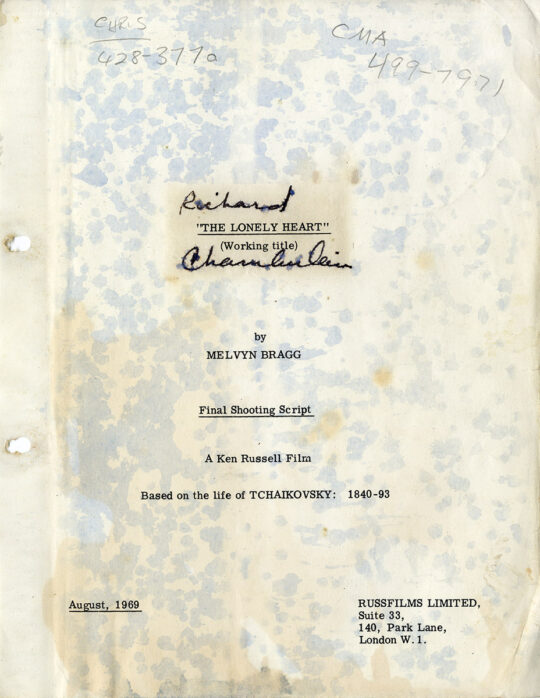
Ken Russell (director) THE MUSIC LOVERS [working title: THE LONELY HEART] (1969) Final shooting script
$3,000.00 Add to cart -
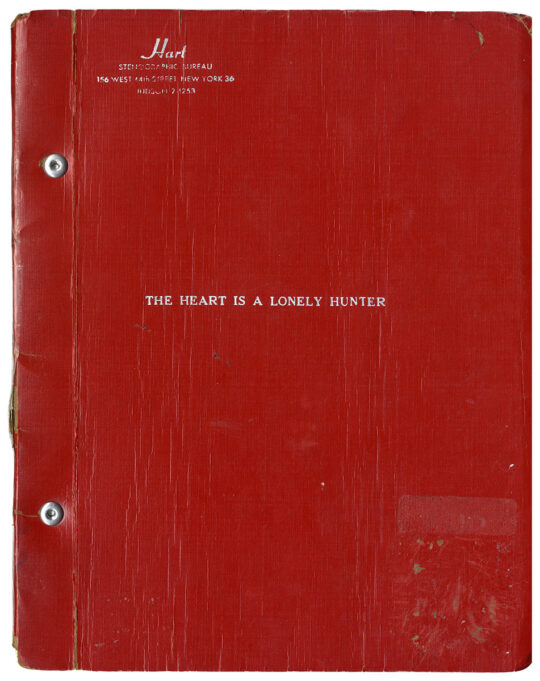
Carson McCullers (source) THE HEART IS A LONELY HUNTER (Aug 26, 1963) Film script by Thomas C. Ryan
$1,000.00 Add to cart -
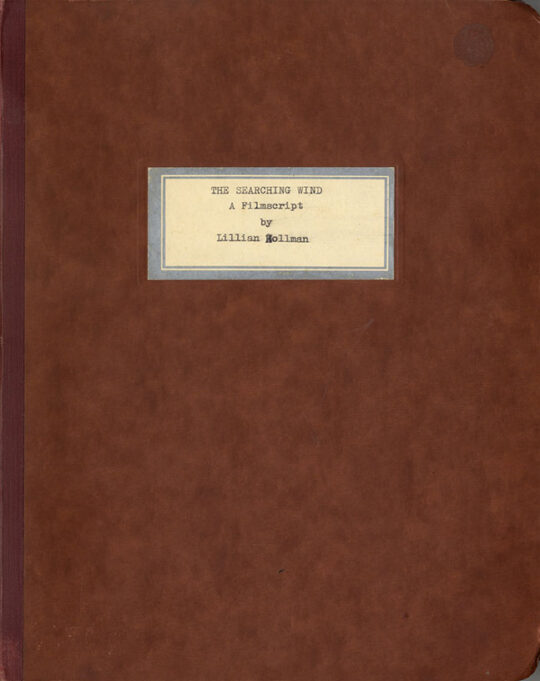
SEARCHING WIND, THE (Nov 7, 1946) Final White script by Lillian Hellman
$1,500.00 Add to cart

